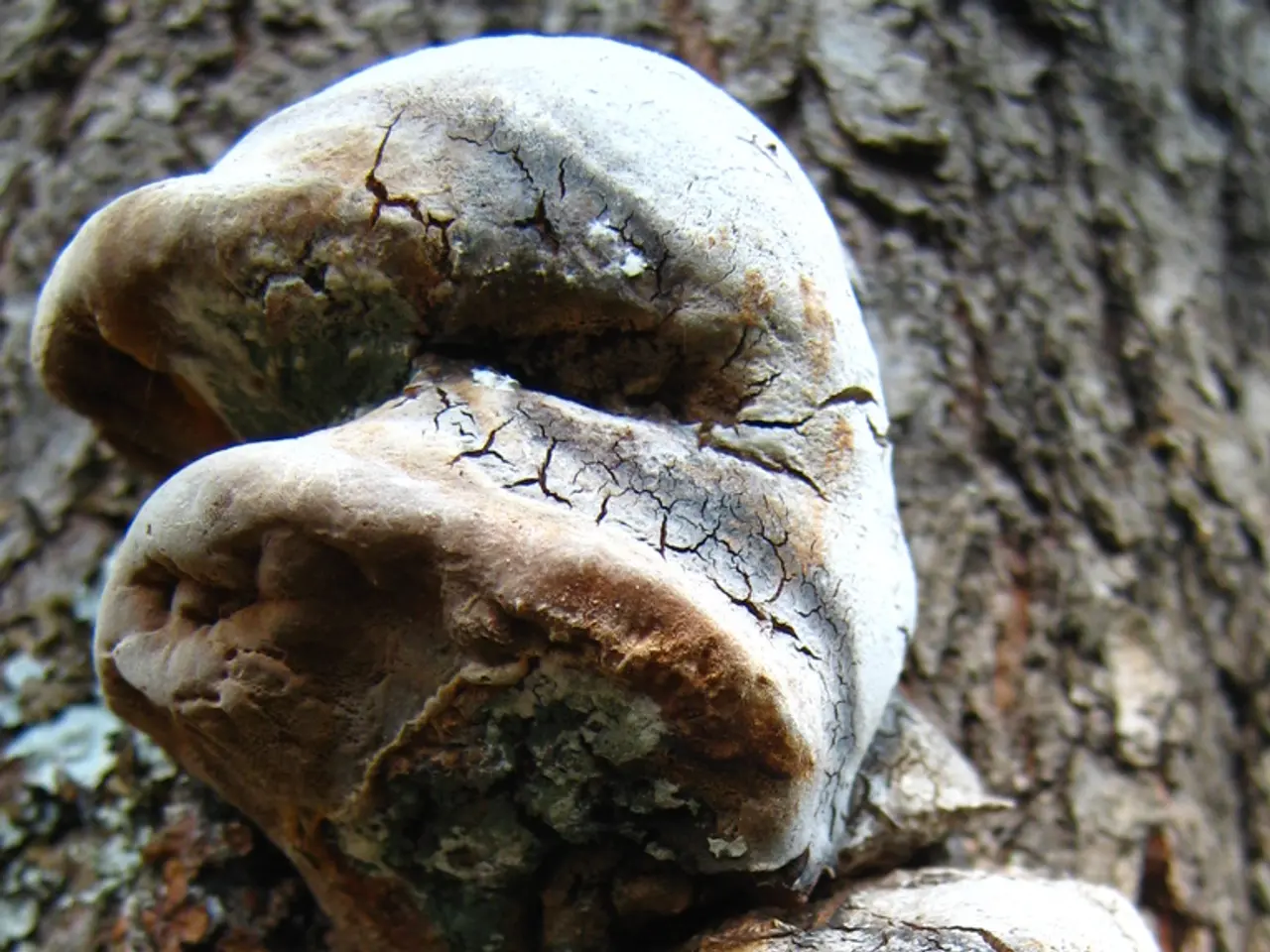Disease Affecting Blackberries: Orange Rust
In the world of fruit cultivation, one fungal disease poses a significant challenge: orange rust. This disease primarily affects black and purple raspberries, as well as most varieties of erect and trailing blackberries. Let's delve into the effective strategies for managing orange rust.
The pathogen responsible for orange rust is Kunkelia nitens. This fungus causes systemic infection in brambles, except for red raspberries. The best way to control orange rust is to plant resistant varieties. Red raspberries are all resistant to orange rust, while all purple and black raspberries are susceptible. The level of resistance in blackberries appears to be dependent on the region.
Effective management strategies include careful variety selection, cultural practices, and chemical control. When it comes to variety selection, avoid planting highly susceptible cultivars, such as Navaho blackberry and black raspberry, which are very vulnerable to orange rust.
Cultural practices play a crucial role in managing orange rust. Remove and destroy wild blackberries and infected plants within at least 0.25 miles of the cultivation site to reduce the disease source. Regularly inspect plants for symptoms, especially on leaves. Orange rust creates systemic infections, so early removal of infected plants is critical to control. Practicing good sanitation by removing infected canes and plant debris helps reduce inoculum. Maintain good air circulation by pruning to reduce humidity favorable to the pathogen.
Chemical control can complement plant removal, especially in commercial plantings. For floricane varieties, also spray the primocane shoots to protect the buds on next year's floricane. However, for home fruit plantings, fungicide sprays are generally not considered an effective control method for orange rust.
The disease development of orange rust is complex, but important periods of infection include spring and fall. Spring infections are favored by cool and persistently wet conditions and can come from infected canes or spores blown by the wind from nearby brambles. Disease symptoms can be easily identified shortly after new growth appears in the spring, with symptoms such as weak and spindly shoots, and leaves covered with blister-like pustules that turn powdery and bright orange.
In the spring, immediately after the last frost, carefully scout for and dig out orange rust-infected plants, including roots. Fall infections begin to occur about 21 to 40 days after spring infections, and the fungus produces a second spore type (basidiospores) that can infect buds of tip-rooted canes or the crown of new shoots being formed on healthy plants. Spring protection against orange rust involves applying fungicides before blisters appear, spraying the leaves and base of the cane. Plants should be removed and destroyed before pustules form, break open, and discharge the orange masses of spores. Fall protection involves applying fungicides towards the base of the floricane and primocane to protect developing buds.
To prevent the spread of orange rust, avoid planting near woodlots or river banks. Purchase planting material from a reputable source to prevent introducing the disease into your planting. Figure 1 shows early season orange rust symptoms on a black raspberry floricane, Figure 2A shows orange rust symptoms on thornless blackberry leaves, Figure 2B shows waxy pustules full of brightly colored orange spores (aeciospores) on leaves of thornless blackberry, and Figure 2C shows orange rust spores on the underside of a wild black raspberry leaf.
In summary, prioritizing planting less susceptible varieties, removing infected and wild hosts nearby, maintaining good cultural sanitation, and applying appropriate fungicides early can effectively reduce orange rust disease impacts in black and purple raspberries and blackberries.
In the realm of health-and-wellness practices, careful consideration of plant varieties is crucial in pest management. For example, when choosing fruit plants, avoiding highly susceptible cultivars like Navaho blackberry and black raspberry can help mitigate the impact of orange rust, a fungal disease that significantly affects brambles.
In the science of plant disease mitigation, good sanitation practices play an essential role. This includes regularly inspecting plants for symptoms and promptly removing infected canes and plant debris to reduce the inoculum, thereby minimizing the spread of orange rust in fruit cultivations.




